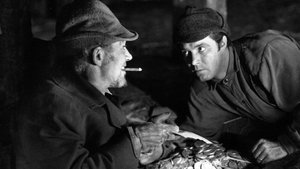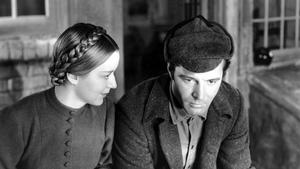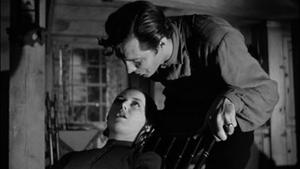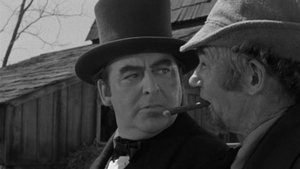Video Sources 0 Views
- Watch trailer
- The Devil and Daniel Webster 1941 Colorized

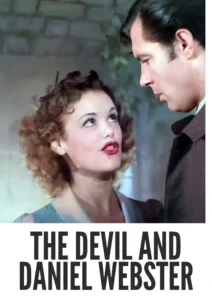
Synopsis
Table of Contents
ToggleThe Devil, a Farmer, and a Lawyer: The Devil and Daniel Webster (1941) in Stunning Color

Step into a world where folklore meets courtroom drama with The Devil and Daniel Webster, a captivating fantasy from 1941, now beautifully colorized for a viewing experience like never before. Also known as All That Money Can Buy, this film delivers a thought-provoking blend of morality, Americana, and the supernatural. Perfect for classic film enthusiasts and those seeking a timeless tale, this HD download brings a visually stunning and emotionally resonant piece of cinematic history to your screen.
The Devil and Daniel Webster Storyline: A Deal with the Devil
The Devil and Daniel Webster tells the story of Jabez Stone, a struggling New Hampshire farmer who, plagued by misfortune, makes a deal with the Devil (Mr. Scratch) to gain prosperity. In exchange for seven years of good fortune, Jabez promises his soul.As the years pass, Jabez becomes wealthy and successful, but he also grows increasingly ruthless and unhappy. Realizing the terrible consequences of his bargain, Jabez seeks the help of the famed lawyer and orator Daniel Webster. Webster agrees to defend Jabez in a climactic trial against the Devil himself, arguing for the sanctity of the human soul. The film culminates in a thrilling courtroom battle where Webster uses his wit and eloquence to challenge the Devil’s claim, ultimately fighting for Jabez’s redemption and the values of American freedom and justice.
Movie Cast
The film features a talented cast of actors who bring this fantastical story to life:
- Walter Huston as Mr. Scratch (The Devil)
- Edward Arnold as Daniel Webster
- James Craig as Jabez Stone
- Anne Shirley as Mary Stone
- Jane Darwell as Ma Stone
Movie Genre
The Devil and Daniel Webster falls into the genre of fantasy drama, with elements of folk tale, morality play, and courtroom drama. Its blend of supernatural themes and American values makes it a unique and enduring film.
Historical Context: Americana and the Supernatural in Film
Released in 1941, The Devil and Daniel Webster reflects a period of American cinema where folk tales and patriotic themes were popular. The film was produced during a time of national uncertainty, with the looming threat of World War II, and it resonated with audiences seeking reassurance in American values and traditions. The Devil and Daniel Webster is not just a fantasy film; it’s a reflection of American identity and the eternal struggle between good and evil.
Colorization Details
This colorized version of The Devil and Daniel Webster has been meticulously restored using modern digital techniques, enhancing the visual appeal while preserving the film’s original atmosphere. The colorization process involved carefully analyzing the grayscale tones of the original black and white footage and assigning appropriate colors to each scene. While the specific software used remains proprietary, the techniques employed included advanced algorithms for color palette selection and image enhancement. This painstaking process brings new life to the characters and settings, making the story even more engaging for modern audiences. While some may debate the merits of colorizing classic films, it introduces these films to a broader audience, ensuring their legacy for future generations.
Technical Details
- Director: William Dieterle
- Screenplay: Dan Totheroh, Stephen Vincent Benét (play), and Benét’s short story.
- Cinematography: Gregg Toland
- Edited by: Robert Wise
- Music by: Bernard Herrmann
- Production Company: RKO Radio Pictures
- Distributed by: RKO Radio Pictures
- Runtime: 106 minutes
Technical Specifications
- Download Format: MP4
- Resolution: HD (1080p)
- Compatibility: Compatible with most devices, including smartphones, tablets, computers, and smart TVs.
Reviews and Critical Reception
The Devil and Daniel Webster (1941) is widely regarded as a classic of American cinema, praised for its superb performances, evocative atmosphere, and timeless themes. It has been recognized for its artistic and cultural significance, and remains a powerful and entertaining example of American filmmaking. As a visually stunning and emotionally resonant film, The Devil and Daniel Webster provides a unique perspective on American identity.
FAQs
- Q: What is The Devil and Daniel Webster about?
- A: The Devil and Daniel Webster is a fantasy drama about a farmer who makes a deal with the Devil and the lawyer who defends him.
- Q: Is The Devil and Daniel Webster (1941) a well-known film?
- A: The Devil and Daniel Webster is a classic of American cinema, known for its performances and themes.
- Q: Is this version of The Devil and Daniel Webster colorized?
- A: Yes, this version has been professionally colorized to enhance the viewing experience.
- Q: What makes The Devil and Daniel Webster interesting?
- A: The Devil and Daniel Webster offers insights into American identity, the supernatural, and the battle between good and evil.
- Q: What is the download format?
- A: The download format is MP4, which is compatible with most devices.
- Q: What resolution is the download?
- A: The resolution is HD (1080p), providing a high-quality viewing experience.
Download Now in HD!
Watch The Devil and Daniel Webster Today!
